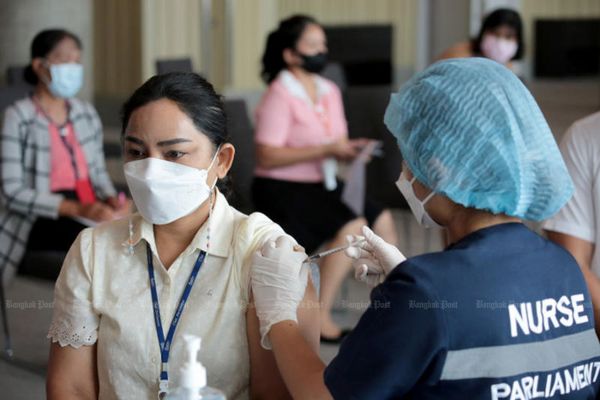
Nothing in life is certain except death, taxes and that the SARS-CoV-2 virus will keep mutating. Despite both the White House and the World Health Organization recently declaring an end to the public health emergencies characterizing the last three years of the pandemic, the pathogen responsible for COVID continues to circulate, still daily infecting large numbers of people, sometimes hospitalizing and killing them or giving them long-lasting symptoms.
In the U.S., 1,100 people died from COVID the week ending May 3, so even though recent stats suggest COVID deaths dropped in 2022. Still, the disease ranks fourth among the leading causes of death in the U.S., meaning it is still killing a very high number of Americans.
It's true that infections and death are trending downward and we have better tools than ever to control COVID. But it is also true that viruses naturally mutate, often evolving new strategies to evade our defenses.
Meanwhile, as SARS-CoV-2 mutates, its symptoms often manifest differently. And the latest batch of variants that are spreading in North America appear to have symptoms very similar to allergies, especially conjunctivitis or pink eye. That means many people have COVID, thinking it's just related to the weird, exceptionally bad allergy season. Unfortunately, unlike allergies or the flu, there is nothing "mild" about COVID, not even the most recent variants, whose infections can still cause brain damage and long COVID.
The Centers for Disease Control and Prevention (CDC) keep a weekly tally estimating the total percentage of virus strains currently circulating. All of them right now are the children or grandchildren of the omicron variant that emerged in late 2021. For most of this year, Americans have been battling against Kraken (XBB.1.5), but it is slowly being superseded by its offspring, such as Arcturus (XBB.1.16).
According to CDC data, Kraken made up roughly 67 percent of cases in the week ending May 6, a decline from its peak of 84 percent in April. Meanwhile, Arcturus has jumped to around 12.5 percent of cases, a rise from just 1 percent at the end of March.
While the string of numbers and letters in a variants name may seem confusing — which is why the nicknames exist — they can represent significant differences between virus strains that manifest as entirely different symptoms. They may also allow the virus to better infect different areas of the body. The delta strain, for example, was more likely to infect the lower respiratory tract, while omicron primarily affects the upper respiratory tract, generally causing less damage to the lungs.
It's simple to clear up any confusion about whether it's COVID or allergies: Take a test. Even though the virus is constantly mutating, even the take-home COVID tests will still work typically. That's because they are designed to capture a wide variety of mutations to the N protein, which differs from the spike protein, the part of the virus used to enter our cells.
Arcturus first appeared in India, but as it makes its way through North America, it seems to be presenting feverish symptoms more commonly as well as mimicking allergies, specifically conjunctivitis. Often called pink eye, this is a reddish-pink inflammation or infection of the transparent membrane (conjunctiva) that lines your eyelid and covers the white part of your eyeball. It can be quite itchy and caused by bacteria, allergens or viruses. COVID-related conjunctivitis is seemingly more common in children, but so far, much of this data is anecdotal.
In late April, the American Academy of Ophthalmology issued a report that eye symptoms alone are probably not a sign of COVID infection. But if your kid has been exposed to the virus or have other symptoms, such as a fever, body aches, cough, or the prototypical loss of taste or smell, it's recommended to have them tested.
The vaccines still do a decent job of preventing serious illness and death from these emerging strains of COVID, but their ability to protect against infection is waning. Federal health agencies recently approved a second bivalent booster shot for immunocompromised people or those over age 65.










